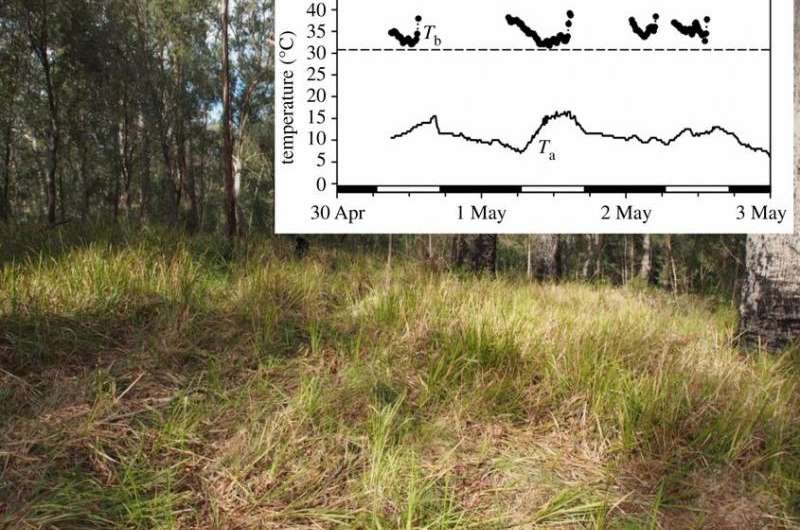June 10, 2015 report
Study shows example of mammal adapting to fires by increasing torpor time

(Phys.org)—A team of researchers with University of New England in Australia has found an example of a mammal adapting to the aftermath of a fire by extending its torpor time. In their paper published in The Royal Society - Biology Letters, the team describes their study involving the brown antechinus, a small insect eating marsupial mammal and why they believe what they learned is relevant to global warning.
Fires have been on the increase, the researchers report, notably in the Australian Bush—they suggest it is due to global warming. They also note that multiple studies have been conducted to learn more about animal displacement and/or migrations that often occur due to fire, but point out, little research has actually been done to learn more about the animals that stay, and how they manage to do so. In this new effort, they looked to the antechinus as a possible guide.
Prior research has shown that the little mammals have a tendency to stick around in an area after a brush fire has burned off the natural cover they use to hide from predators. How they manage to survive was not known. To find out, the researchers captured several specimens from a recently burned area and some others from an area still covered with brush—they affixed radio tracking devices and monitors that measure vital signs to each before setting them free again. They then studied the activity behavior and vital signs of the two groups and compared what they witnessed.
They report that the specimens that remained in the burned areas went into a torpor (a metabolic slowdown state similar to animals that hibernate) for much longer periods of time then their fire-free cohorts—they also ceased venturing out in the daytime, using the cover of darkness to prevent being seen by predators as they foraged. The longer torpor, the researchers explain, meant the animal used less energy and thus needed less to eat—a clear adaptation to a change in their environment. The adaptation also explains results from prior studies that showed antechinus populations able to rapidly bounce back to pre-fire numbers once ground cover was restored.
The researchers suggest the adaptive behavior exhibited by the antechinus shows a possible adaptation to a world that is heating up—one that it is likely used by other species as well.
More information: The importance of mammalian torpor for survival in a post-fire landscape, Biology Letters, Published 10 June 2015, DOI: 10.1098/rsbl.2015.0134
Abstract
Wildfires have increased in frequency and intensity worldwide with climate change as a main driving factor. While a number of studies have focused on population changes in regard to fires, there are essentially no quantitative data on behavioural and physiological adjustments that are vital for the persistence of individuals during and after fires. Here we show that brown antechinus, a small insectivorous marsupial mammal, (i) endured a prescribed fire in situ, (ii) remained in their scorched home range despite unburned areas nearby, and (iii) substantially increased post-fire torpor use and thus reduced foraging requirements and exposure to predators. Hence, torpor is a physiological adaptation that, although not quantified in this context previously, appears to play a key role in post-fire survival for this and other heterothermic species.
Journal information: Biology Letters
© 2015 Phys.org




















